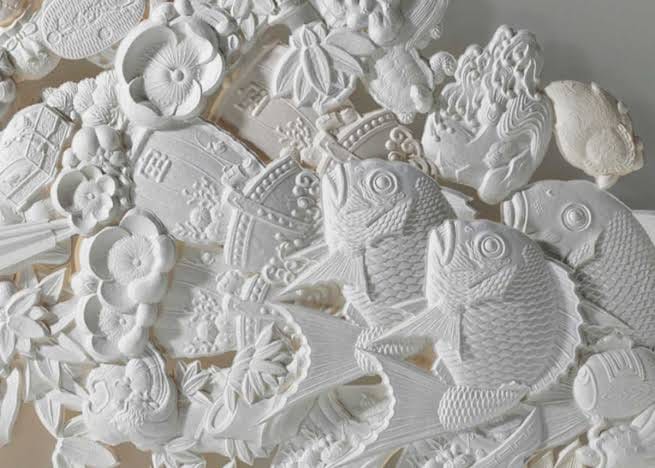Unveiling the Art of Washi - Japan's Ancient Paper Craft

Introduction to Washi
Washi, a traditional Japanese paper, has been a cornerstone of Japanese culture for centuries. Made from the inner bark of the gampi tree, mitsumata shrub, or paper mulberry bush, washi is renowned for its exceptional durability and strength. These unique qualities make it an ideal medium for various traditional arts, including calligraphy, painting, and origami.
The art of washi-making is a labor-intensive process that requires great skill and patience. The bark is harvested, cleaned, and then pounded to create a pulp. The pulp is mixed with water and a natural adhesive, called "neri," to create a uniform consistency. The mixture is then spread onto a bamboo screen and dried to create the final product.
Washi's durability and strength are due to the long fibers of the plant material used to make it. These fibers are woven together to create a strong and translucent paper that is resistant to tearing and wear. This makes washi perfect for traditional Japanese arts, where delicate and intricate designs are often required.
In addition to its practical uses, washi also holds significant cultural and historical importance in Japan. It has been used in traditional ceremonies, such as the tea ceremony, and is often used to create beautiful and intricate designs for special occasions.
History of Washi
Washi, Japan's ancient paper craft, has a rich and fascinating history that spans over 1,300 years. The origins of washi date back to the 7th century when paper was first introduced to Japan from China via the Korean Peninsula.
The Japanese developed washi by refining the paper-making process, using the bark of the mulberry tree (kozu) and other plant fibers to create a strong, translucent, and durable paper. Over time, washi became an integral part of Japanese culture, used not only for writing and art but also for crafts, architecture, and even clothing.
The art of washi-making was further refined during the Heian period (794-1185 CE), when paper production became a highly respected craft. Washi was used for important documents, such as imperial decrees and Buddhist scriptures, as well as for beautiful works of art, like calligraphy and painting.
Throughout Japanese history, washi has played a significant role in the country's cultural and artistic development. Its unique texture and translucency made it an ideal medium for various art forms, including origami, ukiyo-e woodblock prints, and sumi-e ink paintings.
Types of Washi
Washi, Japan's ancient paper craft, boasts a rich diversity of types, each with its unique characteristics and uses. The primary sources of washi are:
- Gampi: Derived from the Gampi tree (Wikstroemia canescens), this washi type is renowned for its exceptional strength, translucency, and durability. Gampi washi is often used for high-end applications, such as conservation and restoration of artwork.
- Mitsumata: Sourced from the Mitsumata tree (Edgeworthia chrysantha), this washi type is prized for its softness, flexibility, and resistance to shrinkage. Mitsumata washi is commonly used for traditional Japanese arts, like calligraphy and woodblock printing.
- Paper Mulberry: Also known as Kozo, Paper Mulberry (Broussonetia papyrifera) is the most widely used washi source. It offers an excellent balance of strength, durability, and affordability, making it suitable for various applications, including origami, lanterns, and decorative papers.
Interestingly, almost any grass or tree can be transformed into washi with sufficient processing. This versatility has led to the development of various washi types, each with its unique texture, color, and properties. The art of washi-making continues to evolve, incorporating new materials and techniques while maintaining its traditional essence.
Manufacturing Process
Unveiling the art of washi, Japan's ancient paper craft, requires a deep dive into its meticulous manufacturing process. Washi production involves a long and intricate process relying heavily on manual methods, ensuring each sheet of paper is a testament to the artisan's skill and dedication.
The process begins with the cultivation of the mulberry plant, whose bark is harvested and processed into a pulp. This pulp is then mixed with water and a natural adhesive, called "neri," to create a uniform consistency. The mixture is then spread onto a bamboo screen and carefully smoothed out to create an even layer.
The screen is then gently rocked back and forth to remove excess water and align the fibers. This labor-intensive process requires great skill and patience to produce high-quality washi. The paper is then left to dry, either naturally or with the aid of a specialized drying rack.
Once dry, the washi is carefully cut and finished, ready to be used in various applications, from traditional art forms to modern designs. The entire process, from cultivation to completion, is a testament to the artisan's expertise and dedication to preserving this ancient craft.
Applications of Washi
Washi, Japan's ancient paper craft, has been a cornerstone of Japanese culture for centuries. Its unique texture, durability, and versatility have made it an essential material for various applications, from traditional arts to modern uses.
Traditional Uses
Until the early 20th century, washi was used in a wide range of applications, including:
- Writing: Washi was used for writing letters, poetry, and literature, as well as for creating important documents and certificates.
- Art: Washi was used for traditional Japanese art forms like sumi-e (ink painting) and ukiyo-e (woodblock printing).
- Crafts: Washi was used for making traditional crafts like origami, kites, and lanterns.
Modern Uses
Although modern paper has replaced washi in many everyday applications, it is still highly valued and used today for traditional arts, such as:
- Origami: Washi is still used for making intricate paper sculptures and designs.
- Calligraphy: Washi is used for traditional Japanese calligraphy, known as shodou.
- Conservation: Washi is used in book conservation and restoration due to its durability and resistance to decay.
In addition to these traditional uses, washi is also used in modern applications like:
- Interior design: Washi is used for making decorative paper walls, screens, and other interior design elements.
- Fashion: Washi is used in fashion design for making unique textiles and accessories.
- Art: Washi is used by contemporary artists for creating innovative and mixed-media art pieces.
Washi's unique properties and aesthetic appeal continue to inspire artists, craftspeople, and designers, ensuring its relevance in modern times.
Conclusion
As we conclude our journey through the realm of washi, it becomes evident that this ancient paper craft is a unique and valuable part of Japanese culture and history. With its rich heritage and versatility, washi has been a silent companion to Japan's artistic and cultural evolution, playing a significant role in shaping the country's aesthetic sensibilities.
One of the most striking aspects of washi is its durability and strength, making it an ideal material for various traditional arts, such as calligraphy, painting, and origami. The tactile experience of washi, with its subtle texture and gentle roughness, adds a sensory dimension to these art forms, elevating them to new heights of expression and beauty.
The art of washi is not just a testament to Japan's past but also a beacon for its future. As the world grapples with the challenges of sustainability and environmental consciousness, washi offers a poignant reminder of the importance of preserving traditional craftsmanship and embracing eco-friendly practices. In an era dominated by digital media, washi's tangibility and uniqueness serve as a refreshing respite, inviting us to slow down and appreciate the beauty of the physical world.
In conclusion, the art of washi is a treasure trove of Japanese culture, waiting to be explored and cherished. As we continue to navigate the complexities of modern life, let us draw inspiration from this ancient craft, allowing its timeless beauty and wisdom to guide us toward a more mindful and sustainable future.


















Comments ()